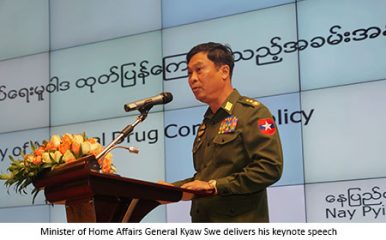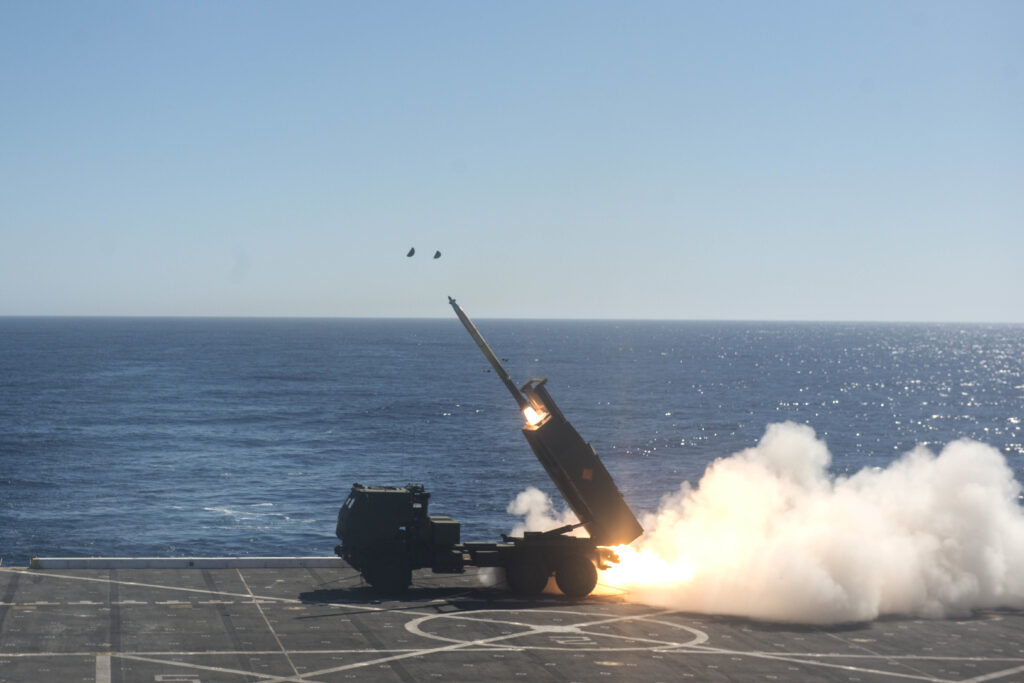India finds itself increasingly cornered into a strategic cul-de-sac. Even as its diplomacy expands, its political options seem to decrease; even as it reaches out to look east and look west, the strategic space to address its core concerns does not seem to be expanding; and even as its bluster about a strong state grows, doubts about its military capabilities are growing equally louder. So, paradoxically, India finds itself in this position that even as it is globally recognised, it looks more helpless in its own backyard.
28 February 2018
India in a corner: Beneath the foreign policy bluster is a great floundering
Why India won’t intervene militarily in Maldives
Dr. Abdul Ruff
 An Indian Ocean archipelago of 1,192 islands, the Maldives is a tourist paradise. The Maldives is a low-lying country that is expected to be among the first in the world to go under water as a result of climate change. While it may take a few more decades for rising sea levels to wreak havoc on the archipelago, there are more immediate and pressing problems tearing the country apart.
An Indian Ocean archipelago of 1,192 islands, the Maldives is a tourist paradise. The Maldives is a low-lying country that is expected to be among the first in the world to go under water as a result of climate change. While it may take a few more decades for rising sea levels to wreak havoc on the archipelago, there are more immediate and pressing problems tearing the country apart.
Tourism is the backbone of the country’s economy, and tour operators have reported hundreds of daily cancellations since the state of emergency was imposed on February 5. Following the state of emergency, Maldives has been in a tensed state of existence in as the archipelago is facing a sort of turmoil, ransacking its tourism based economy.
Microgrids in India: Myths, misunderstandings, and the need for proper accounting
Rahul Tongia
India has a vibrant market for batteries and inverters and even diesel generators – but a cynic could call these responses to the failure of the grid in providing quality supply. Are microgrids similarly stepping in to fill gaps in grid-based supply? This Impact Series Paper revisits the fundamentals and drivers for microgrids, and suggests that a “gap-filling” or competitive model against the grid may not be the most scalable solution.
America Will Never Win the War in Afghanistan
Ali Wyne
 It is difficult to see how the present troop force in Afghanistan would be able to accomplish what one nearly seven times as large could not.
It is difficult to see how the present troop force in Afghanistan would be able to accomplish what one nearly seven times as large could not.
According to an in-depth investigation conducted by BBC News reporters in late 2017, the Taliban fully control four percent of Afghanistan’s districts and “have an active and open physical presence” in 66 percent of the remaining ones. They found that roughly half of the Afghan people “are living in areas that are either controlled by the Taliban or where the Taliban are openly present and regularly mount attacks.”
What Next for Myanmar’s New Drug Strategy?
By Prashanth Parameswaran
 Though a new policy signals a shift to a more comprehensive approach to the problem, the true test will be in its implementation.
Though a new policy signals a shift to a more comprehensive approach to the problem, the true test will be in its implementation.
On February 20, Myanmar, one of the world’s largest drug-producing countries, finally launched a new national drug control policy after years of deliberations. Though the document does signal a shift to a more comprehensive approach to addressing a chronic problem, the true test will how that approach is implemented in the coming years.
China and Ethiopia, Part 2: The Addis Ababa–Djibouti Railway
By Dawisson Belém Lopes
An important piece of news went practically unnoticed in January 2018: according to Nature, China surpassed the United States in the number of articles published on Elsevier’s Scopus, one of the world’s top scientific databases. Although on average, Chinese publications are not as influential as North American and European studies, they do help set trends for many some disciplines, and might well push the Western world into a peer-to-peer dialogue that would not be happening otherwise. As recent figures show, there has been a sharp increase of 37 percent in the number of citations of China-based authors in academic articles over the last five years. That serves as a telling proxy indicator for who is now massively investing in knowledge and will, in all probability, harvest the power of that knowledge in the future.
China’s Drones Are Taking on ISIS (And Here’s Why America Should Worry)
Arnaud Delalande
 On Feb. 12th, 2018, the Iraqi ministry of defense released a videodepicting its Chinese-made CH-4B armed unmanned aerial vehicles. The brief report underscores the type’s success in Iraqi service.
On Feb. 12th, 2018, the Iraqi ministry of defense released a videodepicting its Chinese-made CH-4B armed unmanned aerial vehicles. The brief report underscores the type’s success in Iraqi service.
The video claims that the CH-4B drones have executed most of their attack and reconnaissance missions in northwest Iraq. Since their entry into operational service, they have performed no fewer than 260 air strikes against Islamic State targets, with a success rate close to 100 percent.
Nuke China: How America Could Have Won the Korean War (Or Started World War III)?
Robert Farley
How To Implement The National Defense Strategy In Pacific
 The National Defense Strategy does a service by getting the diagnosis right. But that is only the first step. To get the right prescription—the defense program—we will have to develop the operational concepts that link the ends sought with the means we can procure to achieve them.
The National Defense Strategy does a service by getting the diagnosis right. But that is only the first step. To get the right prescription—the defense program—we will have to develop the operational concepts that link the ends sought with the means we can procure to achieve them.
A Marine HIMARS missile launcher fires from the deck of the USS Anchorage during the Dawn Blitz 2017 exercises.
Andrew Krepinevich, one of Washington’s leading strategists, was a career Army officer, a graduate of the legendary Andy Marshall’s Office of Net Assessment, and the longtime leader of the influential Center for Strategic & Budgetary Assessments. He has spent decades studying how to protect the United States and its allies. We asked him to analyze the Trump Administration’s new National Defense Strategy. He replied with this incisive analysis of what the NDS gets right and what needs to happen next. The strategy correctly diagnoses the strategic problem, Krepinevich writes, but what we need next is the prescription for how to solve it. Here’s his. Read on! The Editors
Can Airstrikes Alone Tackle Islamic State in Libya?
By: Avery Plaw, Allan Pilch
 In the last four months of 2017, the United States resumed bombing Islamic State (IS) targets in Libya. On September 24, 2017, U.S. African Command (AFRICOM) announced it had conducted airstrikes against an IS training camp on September 22 at 7:06 PM, killing 17 militants and destroying three vehicles (U.S. African Command, September 24, 2017). According to AFRICOM, the training camp, located 150 miles southeast of the city of Sirte, was hit by a half-dozen “precision strikes” launched from B-2 bombers and Reaper Drones. It also claimed that the terrorist group was stockpiling weapons at the camp, hosting foreign fighters and plotting more attacks in Libya and elsewhere.
In the last four months of 2017, the United States resumed bombing Islamic State (IS) targets in Libya. On September 24, 2017, U.S. African Command (AFRICOM) announced it had conducted airstrikes against an IS training camp on September 22 at 7:06 PM, killing 17 militants and destroying three vehicles (U.S. African Command, September 24, 2017). According to AFRICOM, the training camp, located 150 miles southeast of the city of Sirte, was hit by a half-dozen “precision strikes” launched from B-2 bombers and Reaper Drones. It also claimed that the terrorist group was stockpiling weapons at the camp, hosting foreign fighters and plotting more attacks in Libya and elsewhere.Israel's Syria Strikes Revealed Its Red Lines
Daniel R. DePetris
 During a trip to the Israel-Syria border in the Golan Heights on February 6—after commiserating with the Israeli military officers defending the frontier and inspecting the equipment—Israeli prime minister Benjamin Netanyahu delivered a warning through the press to the Iranians, the Assad regime, Hezbollah, the Islamic State and any other actor on the Syrian battlefield that sought to challenge the Jewish state. Israel, Netanyahu assured, wants peace for everybody in the region. But if anyone dares attack Israel in any way, “we are prepared for any scenario, and I do not suggest anyone test us.”
During a trip to the Israel-Syria border in the Golan Heights on February 6—after commiserating with the Israeli military officers defending the frontier and inspecting the equipment—Israeli prime minister Benjamin Netanyahu delivered a warning through the press to the Iranians, the Assad regime, Hezbollah, the Islamic State and any other actor on the Syrian battlefield that sought to challenge the Jewish state. Israel, Netanyahu assured, wants peace for everybody in the region. But if anyone dares attack Israel in any way, “we are prepared for any scenario, and I do not suggest anyone test us.”Ukraine Cuts Dependence on Russian Nuclear Fuel, Moves Away From Coal
By: Oleg Varfolomeyev
Westinghouse will extend nuclear fuel deliveries to seven of Ukraine’s fifteen nuclear power units to 2021–2025, in line with a contract signed between this firm and Ukraine’s state-owned nuclear power company Energoatom. Deliveries to Ukraine under the new deal are to begin immediately after the current contract expires in 2020. Moreover, fuel components for local nuclear power plants (NPP) will be produced not only in the United States, but also in Ukraine, with assembly to be made at a Westinghouse facility in Sweden. Energoatom President Yury Nedashkovsky said his company is the world’s only operator of the Soviet-designed VVER-1000 reactors to have fully diversified its sources of fuel supply (Energoatom.kiev.ua, January 29).
How to Solve the Ukraine Crisis: Peacekeepers?
Dave Majumdar
 The Ukraine crisis continues to be the main source of tension in the NATO-Russia relationship according to the alliance’s top official. The alliance hopes to reduce tensions by working with Russia to implement the Minsk agreements and potentially deploy UN peacekeepers in the war-torn Donbas region.
The Ukraine crisis continues to be the main source of tension in the NATO-Russia relationship according to the alliance’s top official. The alliance hopes to reduce tensions by working with Russia to implement the Minsk agreements and potentially deploy UN peacekeepers in the war-torn Donbas region.
“During the meeting today [with Russian foreign minister Sergei Lavrov] we addressed Ukraine and I underlined the importance of the implementation of the Minsk agreements,” NATO Secretary General Jens Stoltenberg told reporters at the Munich Security Conference onFeb. 17. “I also said that the situation in Ukraine is the main reason for the deterioration of the relationship between NATO and Russia and also the main reason why NATO has adopted its defensive posture in the eastern part of the Alliance.”
Study reveals North Korean cyber-espionage has reached new heights
By David Taylor
 Spying unit is widening its operations into aerospace and defence industries, according to US security firm
Spying unit is widening its operations into aerospace and defence industries, according to US security firm
Kim Jong-un in Pyongyang. A new report says North Korea’s malware operations have increased in ‘both scope and sophistication’.
An increasingly sophisticated North Korean cyber-espionage unit is using its skills to widen spying operations to aerospace and defence industries, a new study has revealed.
A New Beginning for European Defence
It is time to move past institutional integration and develop practical European security capabilities.
Europe is facing multiple security challenges. Russia aims to undermine the European security order and has shown its willingness to violate other countries’ sovereignty and increase its nuclear power. The Middle East and North Africa are on fire, homegrown terrorism threatens the streets of Europe, and cyber and information warfare are on the rise.
Europe is currently ill-equipped to manage this spectrum of threats, and it can no longer rely wholeheartedly on US security guarantees.
Europe is facing a potential crisis in the Balkans. It has to act soon
Ivan Krastev
 The promise of EU membership for states in the region is welcome, but Russia, China and Turkey could create instability
The promise of EU membership for states in the region is welcome, but Russia, China and Turkey could create instability
‘Many factors have brought the Balkans back to the fore – not least the recent refugee crisis, which deeply rattled the region.’
‘The second world war is over but the first world war is not yet finished.” Those were the words of a senior Turkish official I met recently in Ankara. He was speaking of the Middle East, but it was the sort of comment I might well also have heard in Moscow, in Kiev or in the Balkans, about the state of affairs on the European continent.
It Could Get Harder to Track US War Spending
 The administration plans to push “enduring” costs from the Overseas Contingency Operations war fund back into the base budget in future years.
The administration plans to push “enduring” costs from the Overseas Contingency Operations war fund back into the base budget in future years.
Born as a budget-process necessity, the Pentagon’s war fund — né 2001 as the “emergency supplemental,” rechristened Overseas Contingency Operations in 2010 — quickly came under fire by critics who said it was used to hide the cost of conflict, and in the recent decade, even of basic base-building and vehicle-buying. Now the Trump administration says it wants to change what OCO pays for, to “get back to an honest accounting” for USwars. But some outside observers say some of the changes may actually undermine transparency.
Nuclear Posture Review Weakens Deterrence
By Dave Adams
Strategic deterrence—underpinned by credible nuclear arsenals—has underwritten the relative peace among the world’s nuclear powers for more than half a century. During the Obama administration, a slow commitment to modernizing our nuclear capabilities coupled with a dangerous absence of clear strategic dialogue—which left uncertainty about the United States’ willingness to use nuclear weapons even if attacked with them—began to erode the credibility of the U.S. deterrent. At first glance, the 2018 Nuclear Posture Review (NPR) appears to right the nation’s strategic ship by committing to modernizing our nuclear arsenal and by rightly positioning nuclear strategy at the center of the nation’s effort to deter a great power war.
Global Elites Cannot Save a World In Turmoil
 Last weekend’s security conference in Munich was a stark reminder that this class has nothing of substance to offer a world in turmoil.
Last weekend’s security conference in Munich was a stark reminder that this class has nothing of substance to offer a world in turmoil.
Eighty years ago in Munich, French and British politicians handed Czechoslovakia over to Adolf Hitler’s carving knife. Twenty-five years later, a German veteran of the ensuing war founded a conference in Munich that, in its own way, was designed to ensure that such a mistake would never reoccur. That veteran, Ewald von Kleist, came from a distinguished Prussian military family; he served as an officer in the Wehrmacht, had opposed Hitler, and participated actively in a plot against him. He was sent to a prison camp, and was lucky to have escaped execution.
Active Cyber Defence – one year on
A paper written by Dr Ian Levy, Technical Director of the NCSC, following a year of the Active Cyber Defence programme.
In November 2016, the UK government launched the new National Cyber Security Centre strategy. This strategy had many effects, including setting up the National Cyber Security Centre (NCSC) as part of GCHQ and giving it the mandate to pursue the radical action required to better protect the UK’s interests in cyberspace.
Evaluating the U.K.'s ‘Active Cyber Defence’ Program
By Stuart Russell, Nadiya Kostyuk
In November 2016, the U.K. government launched its Active Cyber Defence (ACD) program with the intention of tackling “in a relatively automated [and transparent] way, a significant proportion of the cyber attacks that hit the U.K.” True to their word, a little over a year on, last week the U.K.’s National Cyber Security Centre (NCSC) published a full and frank account (over 60 pages long) of their progress to date. The report itself is full of technical implementation details. But it’s useful to cut through the specifics to explain exactly what ACD is and highlight its successes—how the program could benefit the United States as well.
North Korea poised to launch large-scale cyberattacks, says new report
By Anna Fifield
 TOKYO — North Korea is quietly expanding both the scope and sophistication of its cyberweaponry, laying the groundwork for more devastating attacks, according to a new report published Tuesday.
TOKYO — North Korea is quietly expanding both the scope and sophistication of its cyberweaponry, laying the groundwork for more devastating attacks, according to a new report published Tuesday.
Kim Jong Un’s cyberwarriors have been accused of causing huge disruption in recent years, including being blamed for the massive hack on Sony Pictures in 2014 and last year’s WannaCry ransomware worm, as well as umpteen attacks on South Korean servers.
Now it appears that North Korea has also been using previously-unknown holes in the Internet to carry out cyberespionage — the kinds of activities that could easily metamorphose into full-scale attacks, according to a report from FireEye, the California-based cybersecurity company.
What the budget request explains about Cyber Command’s goals
By: Mark Pomerleau
/arc-anglerfish-arc2-prod-mco.s3.amazonaws.com/public/Q74ENXLP35HFPACGZUAWFAP434.jpg) The Department of Defense’s budget process makes it difficult, if not impossible, to determine specifically how combatant commands request to spend their money.
The Department of Defense’s budget process makes it difficult, if not impossible, to determine specifically how combatant commands request to spend their money.
Cyber Command requested approximately $647 million for fiscal 2018, due mostly to additional funding need for Cyber Command’s elevation to a unified combatant command.
But a comparable figure for fiscal 2019 is not yet available.
Still, clues remain. For example, careful readers can decipher that Cyber Command will continue its offensive cyber effort against the Islamic State, as well as develop an offensive tool that appears as several different attacks, but is actually the same tool.
10 BREAKTHROUGH TECHNOLOGIES 2018
Dueling neural networks. Artificial embryos. AI in the cloud. Welcome to our annual list of the 10 technology advances we think will shape the way we work and live now and for years to come.
Every year since 2001 we’ve picked what we call the 10 Breakthrough Technologies. People often ask, what exactly do you mean by “breakthrough”? It’s a reasonable question—some of our picks haven’t yet reached widespread use, while others may be on the cusp of becoming commercially available. What we’re really looking for is a technology, or perhaps even a collection of technologies, that will have a profound effect on our lives.
How to Grow the Military Without Buying More Ships, Planes, Tanks
 NAVAL BASE SAN DIEGO, CALIFORNIA — At any given time, up to one-third of the haze-gray destroyers, cruisers, and amphibious ships based here are under significant repair.
NAVAL BASE SAN DIEGO, CALIFORNIA — At any given time, up to one-third of the haze-gray destroyers, cruisers, and amphibious ships based here are under significant repair.
Some have white party tents erected on their decks, others are encased in scaffolding, and a few are lifted completely out of the water on massive drydocks — all signals that overhauls are under way. Ships can remain like this, unable to deploy, anywhere from weeks to years, depending on the scale of the maintenance.
Army Hopes For $6.8B From FY18 Budget Deal: 70% For Modernization
By SYDNEY J. FREEDBERG JR.
 PENTAGON: The figures aren’t final, but the Army hopes to get about $6.8 billion in additional funding for fiscal year 2018 thanks to the recently concluded budget deal, Army Secretary Mark Esper said this morning.
PENTAGON: The figures aren’t final, but the Army hopes to get about $6.8 billion in additional funding for fiscal year 2018 thanks to the recently concluded budget deal, Army Secretary Mark Esper said this morning.
The service’s new plan would start delivering a Next Generation Squad Weapon to the infantry by 2023, replacing the M249 SAW light machinegun and ultimately the M4 carbine and M16 rifle. It would begin fielding a Next Generation Ground Vehicleto armored units by 2030, replacing the M2 Bradley.
Subscribe to:
Comments (Atom)
